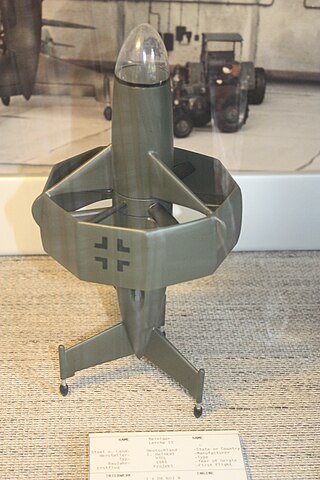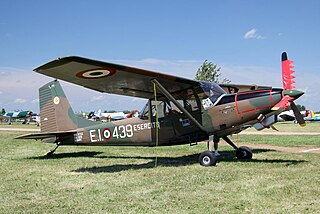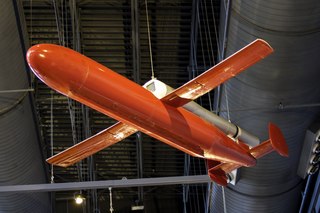Related Research Articles

The MKEK-4 Uğur was a basic trainer aircraft which was used by the Turkish Air Force between 1955-1963. Originally developed as the THK-15, in total 57 Uğurs were produced in Turkey, all of which were used in the Turkish AF Flight School except three which were donated to the Royal Jordanian Air Force.

The Heinkel Lerche was the name of a set of project studies made by German aircraft designer Heinkel in 1944 and 1945 for a revolutionary VTOL fighter and ground-attack aircraft.

The Agusta AZ.8L, or Agusta-Zappata AZ.8L, was an Italian airliner prototype first flown on 9 June 1958. It was of conventional low-wing monoplane configuration with tricycle undercarriage and all-metal construction. Filippo Zappata's design grew out of a twin-engined transport designated AZ.1 that was never built.
The Boisavia B.260 Anjou was a four-seat twin-engine light aircraft developed in France in the 1950s. It was a low-wing cantilever monoplane of conventional configuration with retractable tricycle undercarriage. Intended by Boisavia as a touring aircraft, it did not find a market and only the single prototype was constructed. At this point, the firm sold the design to SIPA, which modified the design and re-engined it with Lycoming O-360 engines, but found that they could not sell it either. At a time when the twin-engine light plane market was already dominated by all-metal American aircraft, the Anjou's fabric-over-tube construction was something of an anachronism, and all development was soon ceased. Plans to develop a stretched version with three extra seats and Potez 4D engines were also abandoned.

The NHI H-3 Kolibrie was a small helicopter developed in the Netherlands in the 1950s by Nederlandse Helikopter Industrie. It first flew in May 1956.

The SIAI-Marchetti SM.1019 is an Italian STOL liaison monoplane built by SIAI-Marchetti for the Italian Army. It is a turboprop-powered derivative of the Cessna O-1 Bird Dog.
The IAR-822 was an agricultural aircraft built in Romania in the 1960s. Based on the IAR-821, it was a conventional low-wing monoplane with fixed, tailwheel undercarriage and differed from its predecessor mainly in the choice of a horizontally opposed engine in place of a radial.

The Blohm & Voss Ha 140 was a German multi-purpose seaplane first flown in 1937. It was intended for use as a torpedo bomber or long-range reconnaissance aircraft but did not enter production.

The Potez 75 was a low-cost, simple, ground-support, observation and launch aircraft for anti-tank missiles, designed and built in the early 1950s, for use in colonial conflicts. One hundred and fifteen were ordered in 1956, but cancelled in 1957.

The Radioplane Q-1 was an American target drone, developed in the early 1950s for the United States Air Force by the Radioplane Company. Originally powered by a pulsejet engine, then later developed as an improved turbojet-powered aircraft, the Q-1 failed to win the favor of the USAF. However, the aircraft provided the basis of the GAM-67 Crossbow anti-radar missile.

The McDonnell TD2D Katydid was a pulsejet-powered American target drone produced by McDonnell Aircraft that entered service with the United States Navy in 1942, and continued in use until the late 1940s.

The Globe KD5G is a pulsejet-powered American target drone produced by Globe Aircraft Corporation that began development in 1949. Due to changing requirements for drone performance, it was only operated by the United States Navy for a short period.

The Globe KD2G Firefly was a pulsejet-powered American target drone, built by the Globe Aircraft Corporation for operation by the United States Navy in the late 1940s, seeing operational use into the mid-1950s.

The Globe KD6G Firefly is an American target drone, built by the Globe Aircraft Corporation for operation by the United States Navy during the 1950s and early 1960s.

The Naval Aircraft Modification Unit KDN Gorgon, originally designated TD2N, was an early jet-powered target drone developed by the Bureau of Aeronautics and constructed by the Naval Aircraft Modification Unit for use by the United States Navy. First flown near the end of World War II, it was cancelled due to problems with its engine in 1946.

The CTV-N-2 Gorgon IIC – also designated KGN, KUN, and CTV-2 – was an experimental drone, originally intended as a surface-to-surface missile, developed by the United States Navy near the end of World War II. It was used to test control and homing systems for guided missiles, and was also produced in small numbers as a target drone under the designations TD3N and KD2N.

The Gorgon III – given the military designations KA3N, KU3N, CTV-N-6 and RTV-N-4 – was a rocket-powered air-to-air missile developed by the United States Navy near the end of World War II. With the end of the war, the program was changed to that of a research vehicle for missile control systems; both single and twin-rocket-powered versions were built and tested.

The Republic SD-3 Snooper was an early reconnaissance drone developed by Republic Aviation for the United States Army. It was evaluated by the Army Signal Corps in 1959, but did not enter operational service.
The Republic SD-4 Swallow was an early high-speed reconnaissance drone developed by Republic Aviation for the United States Army. Intended for use by the U.S. Army Signal Corps to target tactical ballistic missiles, it was cancelled before the first prototype could be completed, and did not see operational service.

The Fairchild SD-5 Osprey was an early high-speed reconnaissance drone developed by Fairchild Aircraft for the United States Army. Intended for use by the U.S. Army Signal Corps to target tactical ballistic missiles, it was cancelled before the first prototype could be completed, and did not see operational service.
References
Citations
- 1 2 3 4 "Aviolanda's New Target Drone" (PDF). Flight : 722. 4 November 1955. Retrieved 2017-12-15.
- ↑ Bowman 1957, p. 85.
- 1 2 3 Ordway and Wakeford 1960, p. N1.
- ↑ Roskam 2002, p. 71.
- ↑ El-Sayed 2017, p.102.
- ↑ Bridgman, Leonard, ed. (1958). Jane's All the World's Aircraft 1958-59. London: Jane's All the World's Aircraft Publishing Co. Ltd. p. 203.
Bibliography
- Bowman, Norman John (1957). The Handbook of Rockets and Guided Missiles. Chicago: Perastadion Press. ASIN B0007EC5N4.
- El-Sayed, Ahmed F. (2017). Aircraft Propulsion and Gas Turbine Engines (Second ed.). Boca Raton, Florida: CRC Press. ISBN 978-1-4665-9516-3.
- Ordway, Frederick Ira; Ronald C. Wakeford (1960). International Missile and Spacecraft Guide. New York: McGraw-Hill. ASIN B000MAEGVC.
- Roskam, Jan (2002). Roskam's Airplane War Stories: An Account of the Professional Life and Work of Dr. Jan Roskam, Airplane Designer and Teacher. Lawrence, KS: DARcorporation. ISBN 1-884885-57-8.